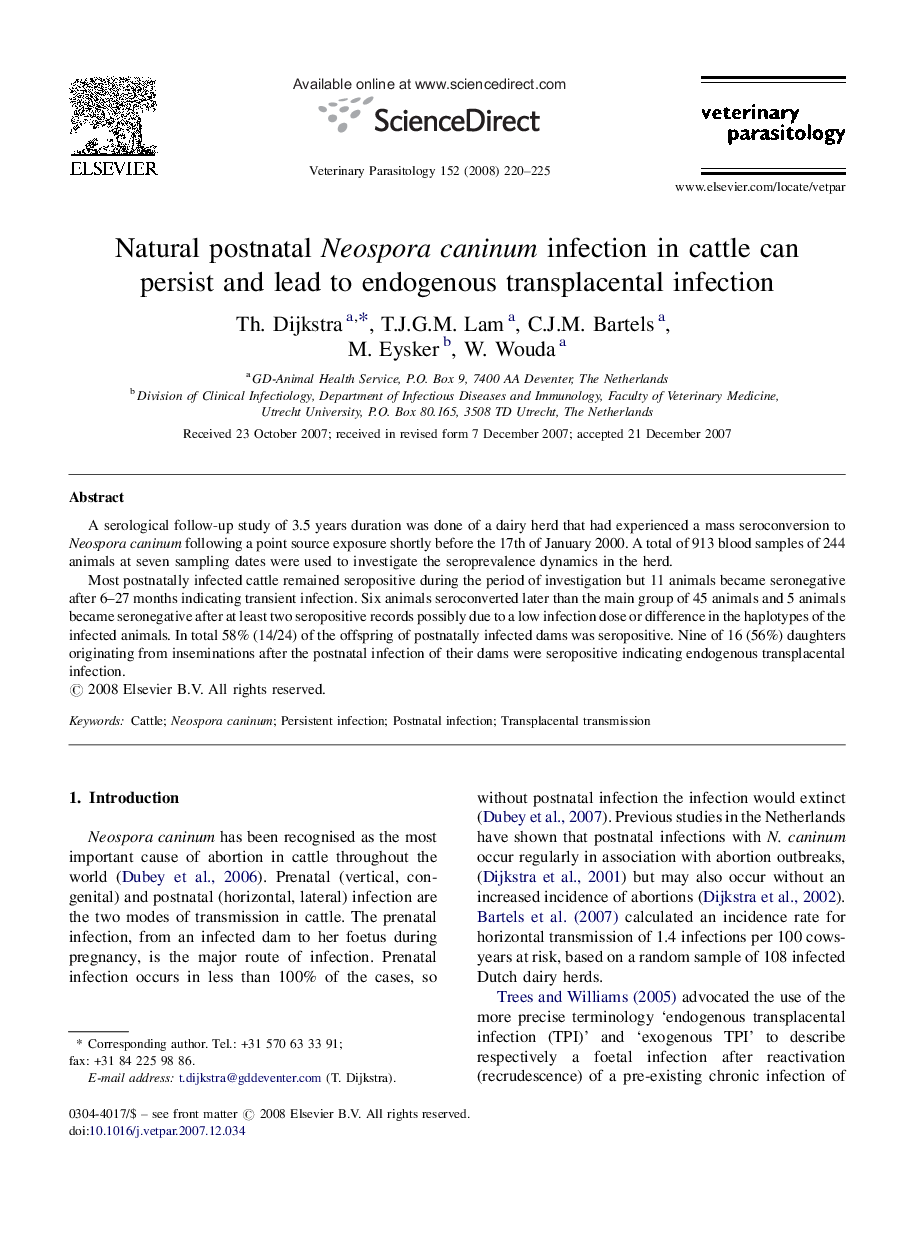| Article ID | Journal | Published Year | Pages | File Type |
|---|---|---|---|---|
| 2471757 | Veterinary Parasitology | 2008 | 6 Pages |
A serological follow-up study of 3.5 years duration was done of a dairy herd that had experienced a mass seroconversion to Neospora caninum following a point source exposure shortly before the 17th of January 2000. A total of 913 blood samples of 244 animals at seven sampling dates were used to investigate the seroprevalence dynamics in the herd.Most postnatally infected cattle remained seropositive during the period of investigation but 11 animals became seronegative after 6–27 months indicating transient infection. Six animals seroconverted later than the main group of 45 animals and 5 animals became seronegative after at least two seropositive records possibly due to a low infection dose or difference in the haplotypes of the infected animals. In total 58% (14/24) of the offspring of postnatally infected dams was seropositive. Nine of 16 (56%) daughters originating from inseminations after the postnatal infection of their dams were seropositive indicating endogenous transplacental infection.
